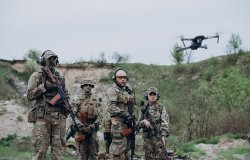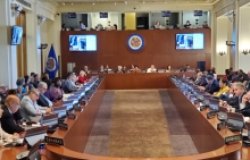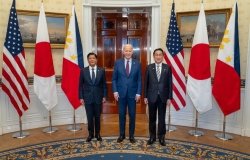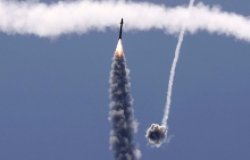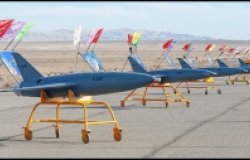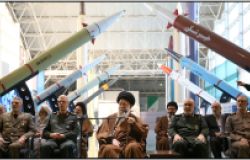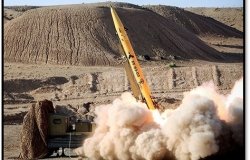Latin American Program in the News: Firma alemana reconoce envío de armas a México
An article on a German company (Heckler & Koch) accused of illegal firearms sales to Mexico cites Colby Goodman's Wilson Center report on firearms trafficking. (in Spanish)
...Trafficking Route Between US and Central America.
Arms trafficking from the U.S. to Mexico and Central America includes roundtrip routes through Mexico into the region, or Guatemala to Mexico, according to a report from the Wilson Center.
The weapons come to Mexico from the United States and from Central America, but also cross Mexico to reach the nations of Central America, especially Guatemala, said the report, prepared based on data from the U.S. Bureau of Alcohol, Tobacco, Firearms and Explosives (ATF).
According to the report, by the specialist Colby Goodman of the Wilson Center in Washington, the traffic is much more complex and it appears the same gang gangs that traffic in stolen ammunition, grenades and military stockpiles Guatemala or El Salvador, where rockets and rifles are left from the wars of the 80s.
Goodman also mentioned guns coming from the United States through Mexico, witharms smuggled in shippments electronics or containers of used cars, for example.
The volume of traffic from the U.S. to Guatemala is considerable, but many criminal also arm themselves with weapons from military arsenals with supplied by U.S., or arms that have "floated" from supplies from the conflict in Colombia or the remnants of wars in Nicaragua and El Salvador .
The study noted that the weapons from U.S. sources constitute at least 40 percent of a sample taken from a single weapons stockpile seized by the Guatemalan authorities in 2009.
The report echoes, albeit in different terms, the claims of some groups such as the National Rifle Association and analysts from Stratfor, citing that cartels get many of their weapons in Central American countries.
In 2010, an estimate indicated that at least 27,000 weapons had been taken from Guatemalan Army arsenals and funneled into Guatemalan and Mexican criminal networks.
Some or many of these weapons had been collected for destruction after the peace accords that ended the armed conflict in Guatemala, where in 2010 there were an estimated seven rifles per soldier.
But the reverse flow is also notorious, Goodman said, recalling that when looking to settle in Guatemala to ensure their cocaine supply routes, Los Zetas brought their own weapons with them (of U.S. origin), as well as their particluar tactics.
The Wilson Center report also reveals that "the Guatemalan authorities captured 46 American-origin explosives in recent years, from hand grenades M-67 to M-406 grenades, 40 mm, and a, anti-tank rocket M-72. Except for the rocket M-72, which the United States sold to Colombia, most of these objects were part of the U.S. military sales to El Salvador in the late 80s and early 90s.
The report explained that the main American states in which arms shipments to Guatemala originated were Texas, California, Florida, Georgia and Arizona (Texas and California are bordering Mexico), all with important populations of Guatemalan origin.
The report estimated that just over half of the weapons that came from the U.S. to Mexico illegally are assault rifles and at least 15% were other rifles, including .50 for Barrett sniper, shotguns and other rifles.
Read the full article here. (in Spanish)
Contributor

Latin America Program
The Wilson Center’s prestigious Latin America Program provides non-partisan expertise to a broad community of decision makers in the United States and Latin America on critical policy issues facing the Hemisphere. The Program provides insightful and actionable research for policymakers, private sector leaders, journalists, and public intellectuals in the United States and Latin America. To bridge the gap between scholarship and policy action, it fosters new inquiry, sponsors high-level public and private meetings among multiple stakeholders, and explores policy options to improve outcomes for citizens throughout the Americas. Drawing on the Wilson Center’s strength as the nation’s key non-partisan policy forum, the Program serves as a trusted source of analysis and a vital point of contact between the worlds of scholarship and action. Read more

Mexico Institute
The Mexico Institute seeks to improve understanding, communication, and cooperation between Mexico and the United States by promoting original research, encouraging public discussion, and proposing policy options for enhancing the bilateral relationship. A binational Advisory Board, chaired by Luis Téllez and Earl Anthony Wayne, oversees the work of the Mexico Institute. Read more
